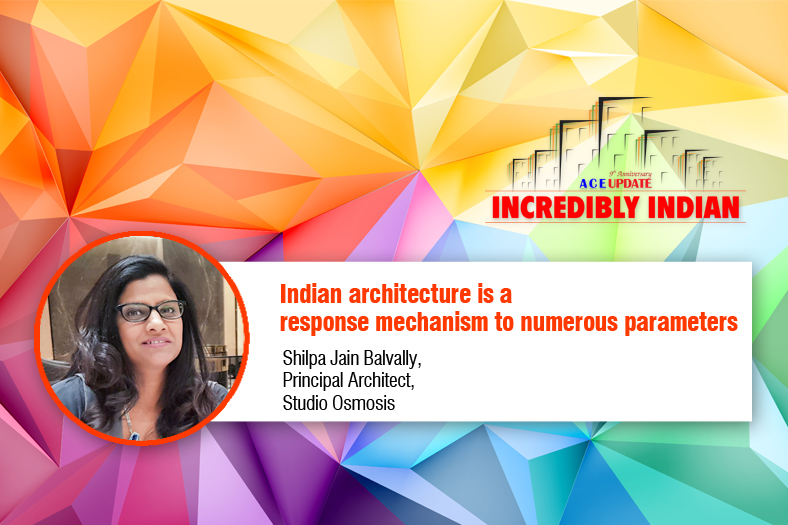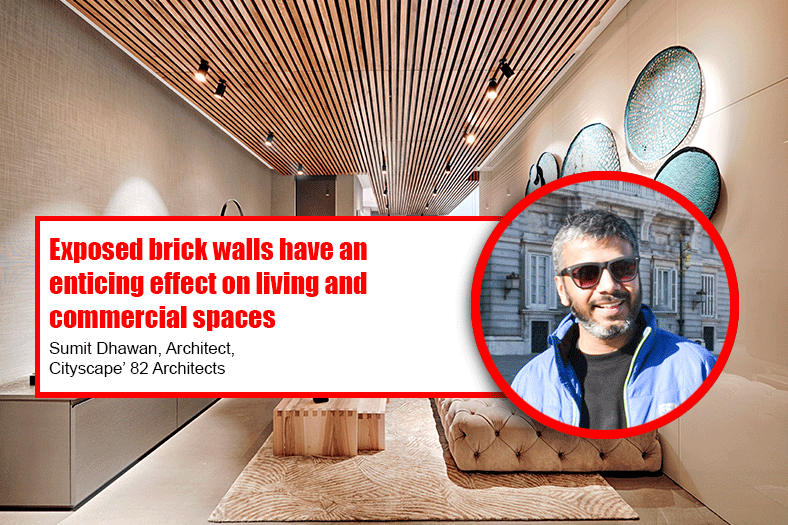Indian architecture is a response mechanism to numerous parameters

Indian architecture has always been about responsiveness to the Indian family lifestyle and way of living and culture, the climate and varied geography across the states, surroundings, materials and cost as well as use of the local skilled work.
Considering India in itself has a vast syntax of architecture and design, what in your opinion is the right definition for Indian Architecture and Design?
Historically, the Indian culture, textiles, and art and handicrafts have been prominent influencers in architecture and design over time be it traditional or even modern. It has always promoted community living, where the people are not separated from one another, rather they are one with the space. It is functional yet aesthetic, which shows the care that has been put to create each space. Indian architecture has always been about responsiveness to the Indian family lifestyle and way of living and culture, the climate and varied geography across the states, surroundings, materials and cost as well as use of the local skilled work. This being the guideline and also being sensitive to the art and culture as well as the celebration of life in India.
As we get globalised day by day, are we in the midst of an identity crisis in the architecture and design sense?
Many a time in the process of globalisation, the essence of the design is lost as we are moving towards mass production rather than embracing our culture. Another factor affecting this is the increasing population with less availability of land and rising real estate costs leading to lesser design thoughts and relevance sometimes.
On the contrary, in a lot of realms and areas, it is also prominently seen that the Indian values, learnings of architecture and design, colours and the culture is now being imbibed in a relevant contemporary way in Architecture in many smaller areas or two and three tier cities also reviving the art and handicraft and skilled labour works in India. The influences are reaching globally across Europe and other places.
When it comes to traditional Indian architecture, which project in your opinion is a landmark project?
Rani ki Vav (Queen’s stepwell), located in Gujarat is a landmark project for traditional Indian architecture. It is both, utilitarian, as well as includes significant architectural embellishments. It was mainly constructed to collect rainwater during seasonal monsoons, and was a community architectural space. It reflects the mastery of the complex technique of stepwell construction and the beauty of detail and proportions.
When it comes to contemporary architecture, which project in your opinion reflects the inherent ‘Indianness’ in the present timeline?
Jawahar Kala Kendra, located in Jaipur by Ar. Charles Correa is a great example of contemporary architecture which revolves around ‘Indianness’. Its concept is based on an archaic notion of the Cosmos and Mandala. Laurie Baker’s conscientious and pragmatic works, Joseph Stein’s careful responses to climatic conditions and landscape, Nari Gandhi’s integration of material and surroundings, and Ranjit Sabikhi’s creative use of courtyards are all inspiring Indian contemporary Indianness.
How much say will technology have in the future of architecture?
Architecture will revolve around technology in the future, as the world is collectively moving towards faster and more sustainable methods of construction. With the increasing demand in spaces, it is important that the construction keeps up with this pace. Technology also helps to break the constraints of construction and brings elaborate designs and spaces to life. Technology sometimes helps in combining the revival of old with the new with more ease and lesser costs and time.
Shilpa Jain Balvally, Principal Architect, Studio Osmosis
Cookie Consent
We use cookies to personalize your experience. By continuing to visit this website you agree to our Terms & Conditions, Privacy Policy and Cookie Policy.









